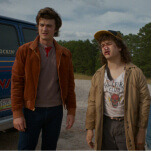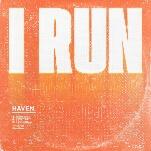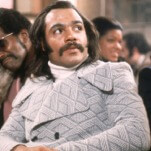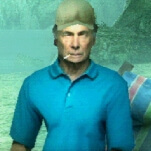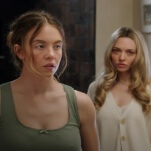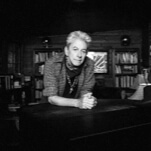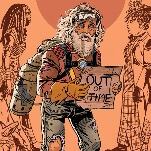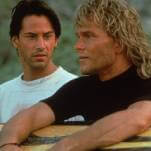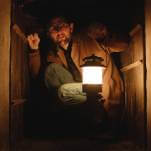To read Noel's Day Two, click here.
Movie Of The Day:
4 Months, 3 Weeks, & 2 Days (dir. Cristian Mungiu): I’ve only seen two features from the suddenly burgeoning Romanian film scene—the dark (dark, dark) comedy The Death Of Mr. Lazarescu and this deserving Palme D’Or winner—and I’ve been impressed both times by their low-down, real-time grittiness in chronicling a deteriorating situation. Mungiu’s gut-wrenching drama, set during the tail end of Nicolae Ceausescu’s oppressive reign, follows a young pregnant woman (Laura Vasilin) and her roommate (Anamaria Marinca) as they seek out an illegal abortion. The title refers to the length of the pregnancy before termination, which the willfully naïve Vasilin underestimates—one of several critical mistakes that make their ordeal all the more desperate. After scraping together some money and scrambling for a hotel room in which to stage the procedure, they have a consultation/negotiation with a shady black-market abortionist (Vlad Ivanov) that catapults the film into very grim place.
4 Months unfolds like one of those street-level Dardenne Brothers movies (Rosetta, L’Enfant, etc.), especially once Marinca has to hit the road to secure the hotel or satisfy her self-centered boyfriend’s request to attend his mother’s birthday party. But just as often, Mungiu keeps the camera running for much longer than other directors would, usually in tight, constricting spaces where the audience can feel the characters’ anxiety grow deeper. There’s a long take at the party that, viewed out of context, would seem like an incredibly boring and indulgent dinner conversation between a table full of bourgeois twits. But here, we can see Marinca’s mounting panic about what could be happening to her friend back in the hotel room, and the scene has a suffocating intensity to it that I won’t soon forget. Ditto the rest of the film, which in the process of dealing with the issues of reproductive rights (in a decidedly non-political fashion), reveals what it was like to live in a repressive society, especially for women, who catch the brunt of the abuse. (A)(See also: Persepolis, below.)
Also Playing:
Rendition (dir. Gavin Hood): I was flambéed in these parts for disliking Tsotsi, Hood’s Oscar-winning debut feature, which I thought started strong enough, but quickly dipped into mawkishness once it proceeded to soften up a pitiless Johannesburg hood who’s transformed by surrogate fatherhood. Hood’s follow-up—a Traffic/Syriana clone about the extrajudicial use of secret prisons and torture tactics post-9/11—confirms my reservations; it’s well-meaning, liberal-minded, and of serious intent, but completely devoid of nuance. From the start, what you see of these characters is what you get: Your first impression doesn’t change, which reduces them all to mere pieces in a politically contrived puzzle. Peter Sarsgaard, as a Senator’s aide who tries to raise a stink over his ex-girlfriend’s husband’s “disappearance,” does some nice work and there’s one clever twist that’s pretty inconsequential on further reflection. But that’s about it for surprises in this boilerplate message movie. (C)
Persepolis (dir. Marjane Satrapi & Vincent Paronnaud): Eventually, Noel and I will disagree on something—or at least like or dislike to a different degree—but not here, I’m afraid. Though the episodic nature of Satrapi’s story, which I imagine played more smoothly in panel form, gives the film an “and then this happened, and then this happened” quality that clogs the pacing from time to time, Persepolis could hardly be more winning. Iranian imports in general don’t often deal explicitly with life in the secular, intellectual middle-class (the Dariush Mehrjui’s superb 1999 film Leila is a notable exception, as was the best scene in Jafar Panahi’s Crimson Gold), likely because its concerns and pursuits wouldn’t make it past the censor board. Satrapi’s charmingly animated life’s story—with its irreverent detours into pop culture, national and family history, and various romantic travails—has so much casual wit that the growing pains and tragedy at the heart of it really sneaks up on you. The overall impression to Satrapi’s coming-of-age adventures is just how vulnerable the individual can be to the forces of history. (A-)
My Winnipeg (dir. Guy Maddin): Maddin’s first foray into documentary—or in this case, “documentary”—filmmaking brings his usual silent-movie pastiche to the form, and adds a few new tricks, including some hilarious recreations of family moment featuring his real-life mother and stock actors as his siblings. A mix of autobiography and urban history both real and imagined, the film extends the personal bent of Maddin’s last film, Brand Upon The Brain!, into a more direct (though still mysterious and brutally self-deprecating) look at what makes him tick. Also like Brand— which was unveiled here and in select U.S. cities with a live orchestra, foley artists, and a celebrity narrator—there was a live performance element, though here it was just Maddin alone on the side of the stage, doing his own voiceover narration. Frankly, a little Maddin goes a long way for me; his hyperkinetic style tends to wear me down, which is why I think his short The Heart Of The World is probably my favorite film of his. Based on the recreated family scenes alone, I’m kind of hoping that he makes a permanent transition from silent-movie pastiche to early sound, but that’s probably not going to happen. (B)
The Mother Of Tears (dir. Dario Argento): If you love horror, you have to have a special affection for Dario Argento; in his prime, with movies like Suspiria, Opera, and Deep Red, Argento was better than anyone at creating a heightened, colorful gothic atmosphere (always in glorious CinemaScope, to boot.) As a fan, you learned to live with the fact that Argento never really cared much about his oft-overdubbed Europudding cast or the cheesy, expository dialogue that came out of their months. These days, Argento is all cheese, no style. The Mother Of Tears, which completes a trilogy (with Suspiria and Inferno) that I wasn’t aware existed, had me giggling from shot one, when a construction worker discovers a magical ancient urn by flipping his front-loader ass-over-teakettle into a giant hole. From there, it goes completely batshit: The urn turns out to contain the spirits of three evil hunch-backed guy and a howler monkey; a woman gets strangled by her own intestines; a possessed mother tosses her baby over a bridge; a gang of evil women who look like refugees from Pat Benetar’s “Love Is A Battlefield” video terrorizes the streets; et al. And while I realize that I’m accidentally making this sound awesome, I could only sit through 45 minutes of it. Laughing derisively at a director I used to admire just isn’t a great feeling. (W/O)

